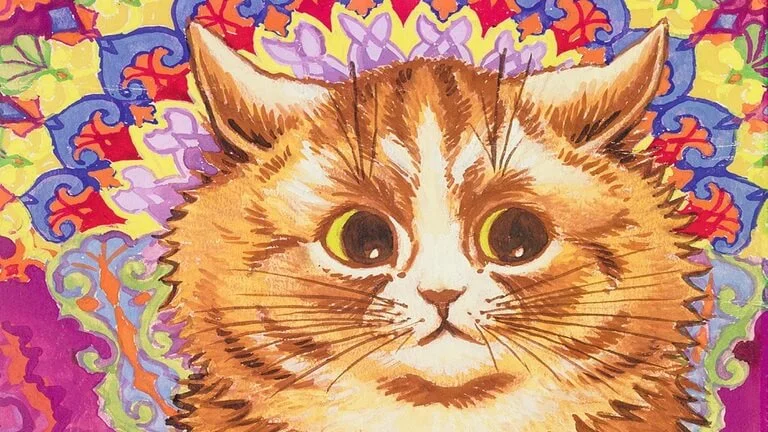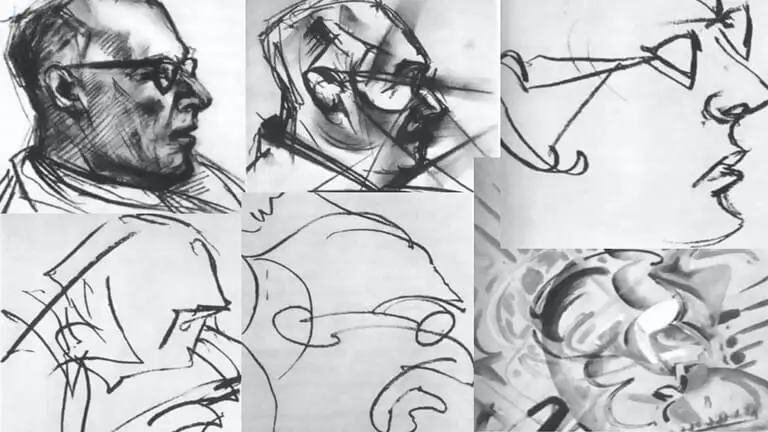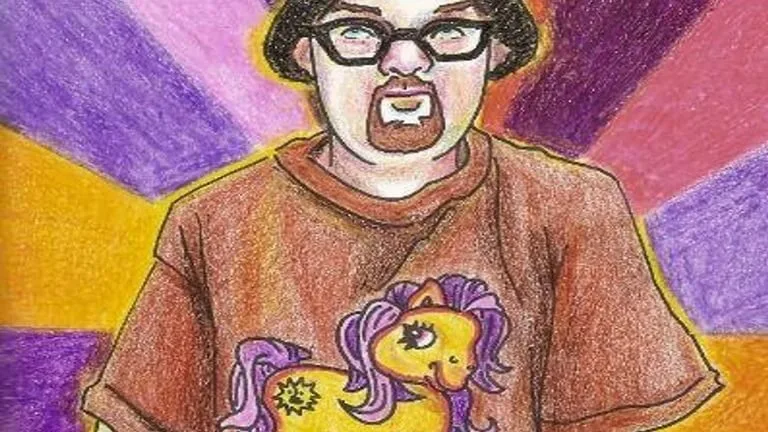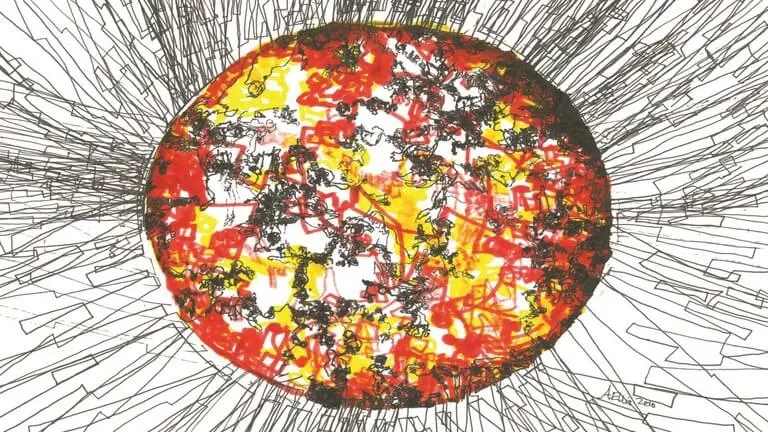People can communicate their thoughts, sentiments, and emotions through art. The trippy art may offer some insight into the peculiar inner workings of their ideas for people who use drugs or have psychiatric illnesses.
Trippy art, also known as psychedelic art, was a graphic art movement that emerged in the middle of the 1960s. It produced visual displays that drew inspiration from psychedelic substances and hallucinations. Artworks created during this period are often known as “psychedelia.” This peculiar trippy art frequently used cartoons and animation and a wide range of vibrant colors to induce a psychedelic experience in the viewer. All contemporary imaginative art is thought to have developed directly after the development and subsequent popularity of psychedelic art.
All works produced in the latter half of the 1960s are called “psychedelic art.” This trippy art sought to show the inner world of the psyche in extraordinarily graphic and vivid ways. This led to the term “psychedelic” being applied to art that appeared to be reenacting sensations and hallucinations. They were typical after ingesting psychedelic substances like LSD and psilocybin.
Let’s jump to the list of the top 5 five trippy psychedelic works of art, including drawings and paintings:

Louis Wain’s Trippy Psychedelic Works Of Art

English artist Louis Wain is well renowned for his depictions of anthropomorphic cats. A Kitten’s Christmas Party, a drawing of his first kitten, appeared in the Illustrated London News in 1886.
His cats developed more anthropomorphic features throughout the years, becoming more like humans. Wain was a prolific artist who regularly produced over 100 cat illustrations each year. His trippy art appeared on numerous postcards and in various magazines.
Wain soon started exhibiting symptoms of schizophrenia. His disease may have begun due to the parasite Toxoplasma gondii, found in cat feces. He was admitted to Springfield Mental Hospital in 1924. But he continued to produce trippy drawings of cats out of passion.
His trippy, psychedelic art underwent a dramatic transformation as his illness worsened. The cats become more adventurous and abstract. His eight-painting series that displayed his “deterioration” was his best-known creation.
Some people think Asperger’s syndrome, not schizophrenia, was to blame for his shift in style. His mental illness didn’t seem to lessen his artistic abilities; instead, it seemed to enhance them. He started experimenting with more vivid hues, complex detailing, and abstract patterns. Wain did not date his psychedelic art, so it is questionable if the famous series of paintings are in the correct order.

Edmund Monsiel’s Trippy Psychedelic Works Of Art

Edmund Monsiel was born and raised in Poland. He was compelled to seek refuge in his brother’s loft during the Nazi invasion. He soon started living alone. He remained undiscovered after the war ended until his passing in 1962.
As a result of his schizophrenia, Monsiel was known to experience both visual and aural hallucinations. He had created more than 500 detailed, trippy pencil drawings by the time his body was located. His pictures, which primarily feature Christ or the Devil, imply that he developed a solid religious conviction while isolated.
He frequently uses a variety of faces in his hallucinogenic, psychedelic art, which is supposed to portray his inner difficulties. In 1943, he recorded visual hallucinations of God and the Devil.
His trippy drawings are vibrant and intricate, even though he lives in a simple flat. He created faces in various shapes and sizes; some of his psychedelic art included up to 3,000 faces.

Oscar Janigar’s Trippy Psychedelic Works Of Art

Oscar Janigar was a notorious artist known for his trippy art who worked as an experimental psychiatrist at the University of California. Between 1954 and 1962, he conducted an extensive study on LSD and was the one who gave the substance to a lot of famous people.
He was only known to have taken LSD about 13 times before it was made illegal, despite his advocacy for the drug. He was particularly curious about the drug’s potential for enhancing one’s capacity for thought and creativity.
He gave 200 micrograms of the medication to 900 participants in one of his studies, and once they finished, he documented their reactions. He had 100 of these patients paint images at this time.
When evaluated, those trippy paintings tended to be more abstract and had brighter colors than usual. There is a collection of psychedelic art created while under the influence of LSD. The artist was instructed to write down his emotions as he made each image.
The charcoal sketches started as accurate representations but quickly lost much of their original identity. The artist frequently remarked that it was challenging to maintain control of the drawing tool.
The patient’s mood changed from unremarkable to euphoric and unexceptional. As the trial closed, some of his patients had nothing to say about their trippy drawings. It was awful and boring for them.

Brian Lewis Saunders’s Trippy Psychedelic Works Of Art

In addition to using drugs, Brian Lewis Saunders opted to try other things to produce his trippy art. Before he began drawing self-portraits on various medications, he was primarily recognized as a Tennessee-based performance artist.
Saunders made the decision to draw a self-portrait each day in 1995. He had around 8,700 trippy drawings at the start of 2016, but he painted his own image under the influence of a different substance every day for 50 days in a row.
He acquired these medications from several doctors, drug users, friends, and neighbors. He also obtained some of the medicines while he was a patient at a psychiatric hospital. All of the medications, in Saunders’ opinion, were free.
He has overdosed on various substances, including cocaine and the exceedingly scary bath salts. These self-portraits, or trippy art, unequivocally show why abstaining from drugs is the best action.
Saunders believes that he quickly developed slight brain damage and became lethargic. But he was curious to observe how the medications affected his sense of self. It’s unknown how, while using these substances, he maintained the drive to finish his trippy art.

Arthur Ellis’s Trippy Psychedelic Works Of Art

Most people imagine darkness when they think about what it’s like to be blind. However, this is frequently not the case. Arthur Ellis, a 66-year-old painter, is widely known for his trippy art. He still paints what he sees despite losing his vision due to meningitis at 59.
Instead of experiencing darkness, Ellis has a condition called Charles Bonnet syndrome. This causes extraordinarily intense visual hallucinations. People with dementia, Parkinson’s disease, or macular degeneration frequently develop this syndrome.
Ellis experienced a terrible earache one day as a result of bacterial meningitis. At the hospital, he was shortly placed on life support. His family was informed that he would probably not survive, but Ellis disproved the medical professionals.
When he awoke, he was shocked to discover himself perched precariously on the cliff’s brink. When Ellis learned he was blind, he understood these images were not authentic. Nevertheless, they were horrifying.
Ellis initially had his sons shift him to various rooms to get away from the visions. Ellis started to manage the images when he received a formal diagnosis of Charles Bonnet syndrome. Although little is understood about the illness, it is thought that the patient’s past memories are used by the brain to fill in the blindness-induced darkness.
Ellis has picked up painting again as a pastime to attempt to make sense of these pictures. He knows that his perception is a trick of his mind, yet he likes to let others see what he sees. Ellis depends on feedback from others about his trippy art because he is still trying to see what he is creating.
More Related Article: Top 5 Five Funny Fat Guy Comedians Of All Time
